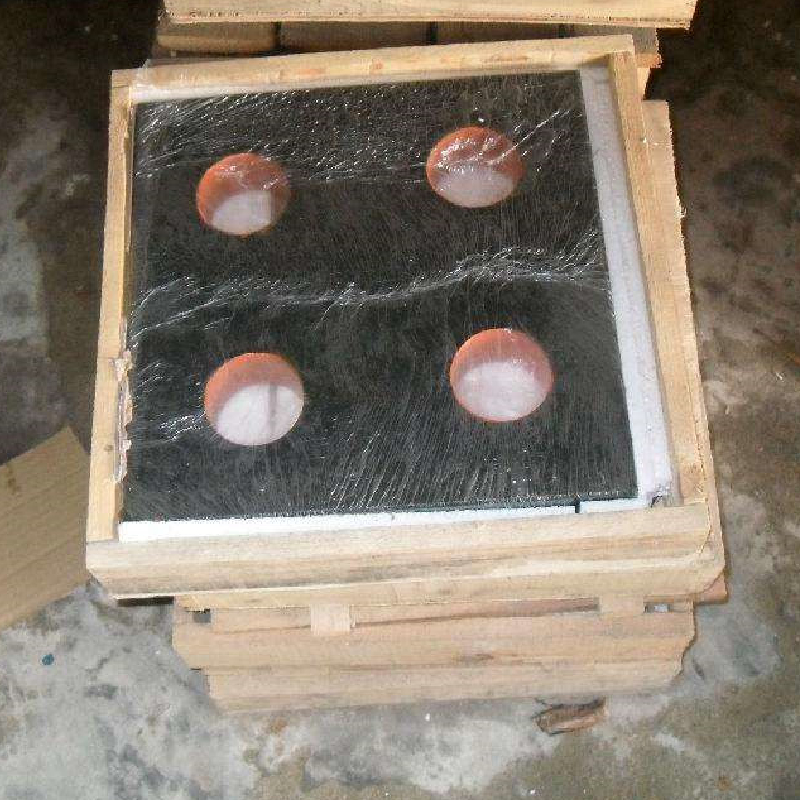Tach . 27, 2024 15:46 Back to list
Pilot Operated Control Valve for Enhanced Fluid Regulation and System Efficiency
Understanding Pilot Controlled Check Valves An Overview
Pilot controlled check valves play a crucial role in hydraulic systems by ensuring fluid flows in a controlled manner. This type of valve is designed to prevent backflow while allowing for smooth forward flow under certain conditions, making it an essential component in various industrial applications. In this article, we will explore the functionality, advantages, and applications of pilot controlled check valves.
What are Pilot Controlled Check Valves?
A pilot controlled check valve is a specialized type of check valve that utilizes a pilot line to control its operation. Traditional check valves rely on the pressure of the fluid itself to operate, allowing flow in one direction while preventing it in the opposite direction. However, pilot controlled check valves add an additional layer of functionality by incorporating a pilot signal, usually from a hydraulic pilot line, to modulate the valve's state.
When the pilot signal is activated, it can overcome the resistance of the check valve, allowing flow in the reverse direction. This unique feature enables systems to manage flow direction more effectively, especially in applications where changes in flow direction are necessary.
How Do Pilot Controlled Check Valves Work?
The operation of pilot controlled check valves involves two key components the check valve itself and the pilot control mechanism. The check valve may consist of a poppet or ball design that opens or closes based on pressure differentials.
1. Flow in Forward Direction When fluid flows in the intended forward direction, the pressure is sufficient to keep the check valve open, allowing for continuous flow throughout the system.
2. Pilot Activation When there is a need to change the flow direction or to allow backflow, a hydraulic signal is sent through the pilot line. This pilot pressure acts on a piston or diaphragm, enabling the valve to open against the backward flow.
3. Backflow Prevention If the pilot signal is not present, the check valve remains closed, preventing any backflow. This feature is vital for ensuring safety and efficiency in hydraulic systems, as backflow can lead to equipment damage or inefficient operations.
Advantages of Pilot Controlled Check Valves
Pilot controlled check valves offer several advantages over traditional check valves
1. Versatility These valves can adapt to different operational conditions, allowing for controlled backflow and flow reversal as required.
pilot controlled check valve

3. Reduced Pressure Drop Since these valves can be opened by a pilot signal, they often maintain lower pressure drops in the system compared to conventional check valves, which can lead to improved overall system efficiency.
4. Improved Safety The prevention of unintentional backflow helps to protect the hydraulic system and its components, mitigating risks associated with pressure fluctuations.
5. Simplified System Design Incorporating pilot controlled check valves can often lead to simpler circuit designs, reducing the need for multiple components and enhancing system reliability.
Applications of Pilot Controlled Check Valves
Pilot controlled check valves are widely used across various industries, including
1. Mobile Equipment In construction and agricultural machinery, these valves are integral in controlling fluid movement in hydraulic actuators, ensuring smooth operation under varying load conditions.
2. Manufacturing In automated assembly lines, pilot controlled check valves help maintain precise flow control, enhancing equipment performance and safety.
3. Oil and Gas These valves are crucial in offshore and onshore operations, managing fluid movements and preventing hazardous backflows in pipeline systems.
4. Aviation In aircraft hydraulic systems, pilot controlled check valves help manage pressures and fluid flow in critical systems, ensuring safety and functionality during flight.
5. Marine Engineering In marine vessels, these valves facilitate efficient control of ballast and other fluid systems, contributing to vessel stability and safety.
Conclusion
Pilot controlled check valves are essential components in modern hydraulic systems, offering superior control, safety, and efficiency. Their ability to manage flow direction and prevent backflow makes them invaluable in various applications, from mobile equipment to industrial processes. As technology continues to advance, the versatility and functionality of these valves will likely enhance their importance in hydraulic engineering and industrial applications. Understanding their operation and benefits can lead to more effective use and optimization in various systems, paving the way for innovation in hydraulic technology.
-
Thread Plug Gauge Our Promise of Measurement ExcellenceNewsAug.22,2025
-
Gauge Pin Class Reflecting Quality LegacyNewsAug.22,2025
-
Check Valve Types for High Rise BuildingsNewsAug.22,2025
-
Water Control Valve for Irrigation SystemsNewsAug.22,2025
-
Gate Valve with Soft Seal TechnologyNewsAug.22,2025
-
Y Type Strainer for Oil and Gas ApplicationsNewsAug.22,2025
Related PRODUCTS









